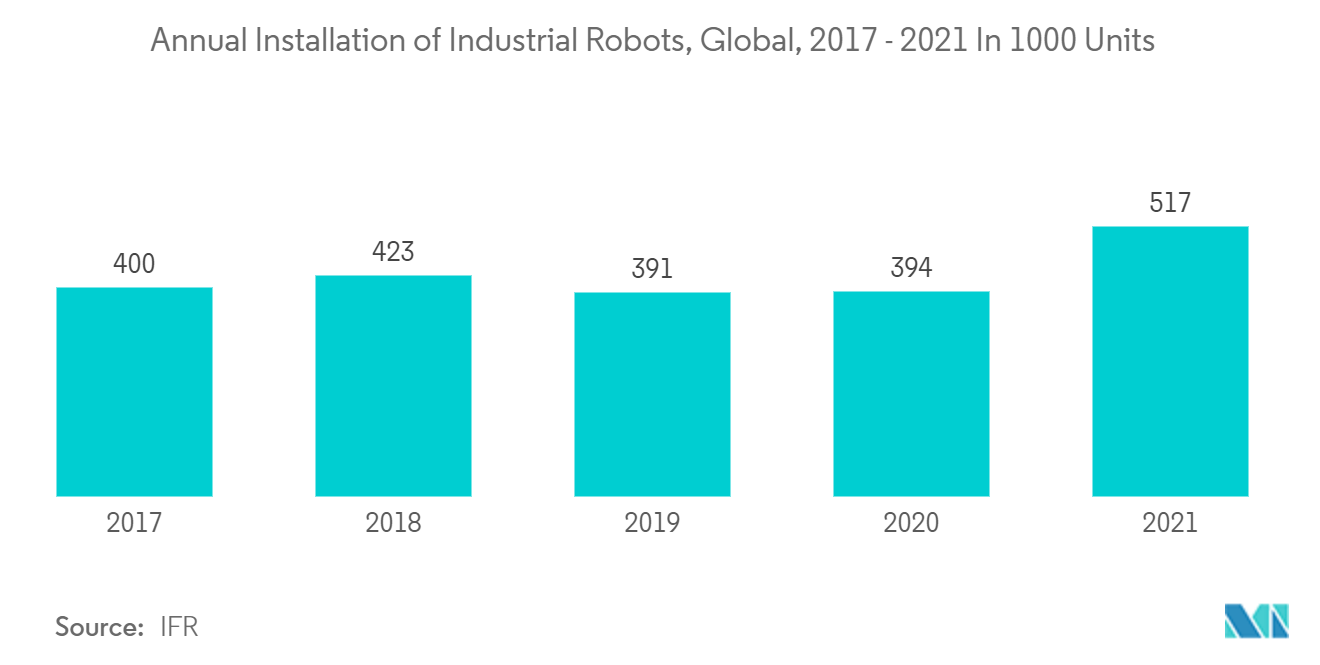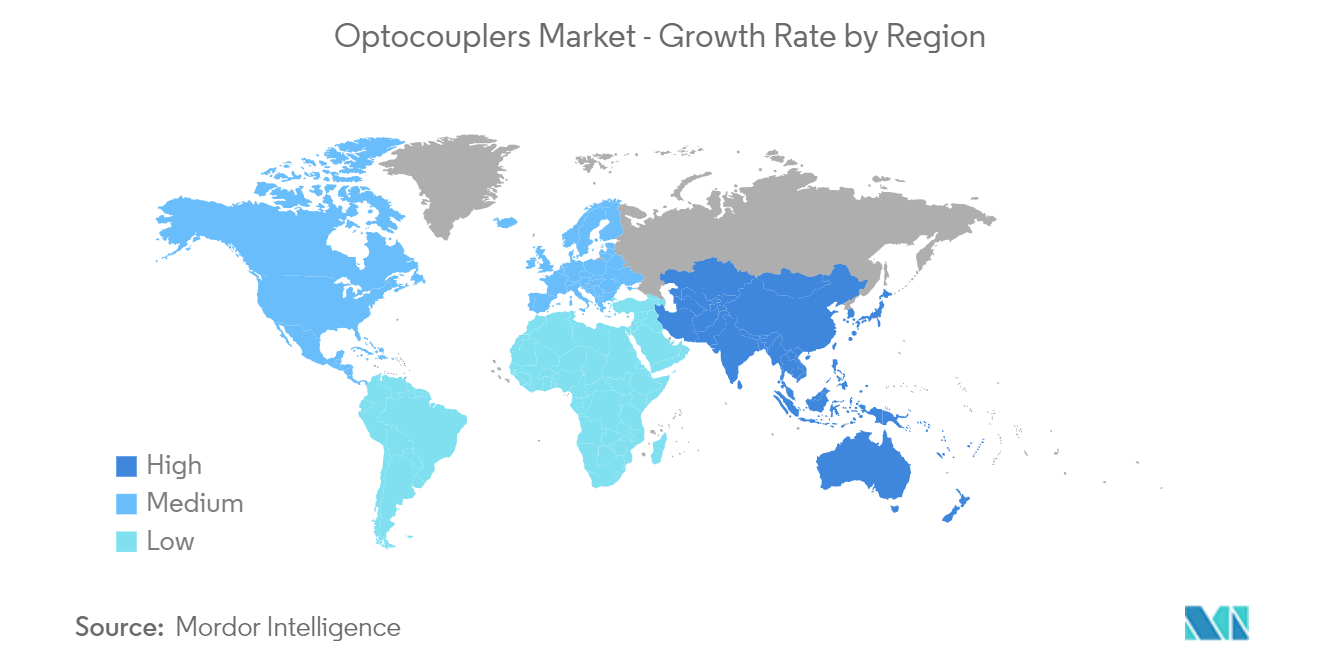Market Trends of Optocouplers Industry
This section covers the major market trends shaping the Optocouplers Market according to our research experts:
Increasing Industrial Automation to Drive the Market
- The industrial sector has traditionally been among the leading adopters of advanced technologies. As the industry is going through another technological shift, the adoption of advanced technologies such as AI, IoT, ML, automation, and robotics has grown significantly. The "Industry 4.0" concept is driving the digital transformation of the field, enabling industries to deliver real-time decision-making, enhanced productivity, flexibility and agility.
- As many electrical and electronic devices and circuits need to be installed to support this infrastructure, this shift in trend is creating a favorable market outlook for the growth of the studied market. Optocouplers are designed to protect sensitive control circuitry from voltage fluctuations and unwanted noise or electromagnetic interference. Additionally, optocouplers also enable isolation in industrial applications ranging from the motor control circuit of servo automation systems and industrial robots, power supply, and photovoltaic (PV) inverters to data communication and digital logic interface circuits, the growing adoption of automation solutions is expected to drive their demand during the forecast period.
- Furthermore, in industrial automation applications, the optocoupler is responsible for transmitting data across the isolation barrier while filtering out unwanted noise. Failure of the component to reject unwanted noise can lead to data-transmission errors. The factors involved in defining CMR are the common-mode voltage (VCM ) and the rise and fall times of the transient signal (dv/dt). The failure point is determined by increasing either VCM or the dv/dt until the optocoupler's output signal crosses into the opposite logic state.
- Industrial automation communication is witnessing increased demand for optocouplers in developing nations such as India, China, and others. Additionally, the increased adoption of automation in the manufacturing sector is also driving the market as optocouplers forms an integral part of the automation process.
- According to the International Federation of Robotics (IFR), the annual installation of industrial robots has increased from 400 thousand units in 2017 to 517 thousand units in 2021. As an industrial robot consists of a robot arm, a Human Machine Interface (HMI) panel, and a control cabinet, different robot components and interfaces must be isolated to ensure the safe operation of the complete robot systems. As optocouplers are among the effective solutions to impart isolation among electrical isolation between two circuits and help the robotic systems facilitate effective communication among various functional units, the increasing adoption of robotics and other automation solutions is expected to drive their demand during the forecast period.

Asia Pacific is Expected to be the Fastest Growing Market
- Optocouplers have most commonly been utilized to provide safety isolation for compliance with domestic and international regulatory requirements. Significant investments in the semiconductor industry, coupled with the increasing demand for efficient optoelectronic components in the industrial sector, bolstered the growth of optocouplers in the Asia-Pacific region.
- East Asia significantly contributes to innovative energy-efficient products and the automotive sector. However, optocouplers also offer another often-overlooked benefit: isolation from electrical noise. China is one of the major influencing factors in the region, owing to its strong foothold in the semiconductor market. The region is also one of the significant contributors to the global automotive sector and the smart energy-efficient products market.
- The Government of India has the right initiatives to boost the country's economy through deluging interest in manufacturing. In terms of export and production, the electronic industry in India is making remarkable growth. According to the Government of India, in February 2021, manufacturing became pivotal in India, with more than one-third of the population using smartphones or other advanced electronics. In India, To create electronic manufacturing clusters, the government has announced 19 EMCs (electronic manufacturing clusters), three of which have been allotted to the Andhra Pradesh government.
- According to the National Bureau of Statistics of China, In 2021, the industrial sector generated almost 32.6 percent of China's GDP. With the increasing automation in the industrial sector in China, the demand for optocouplers is increasing significantly. Industry 4.0, also known as the Fourth Industrial revolution, is the manufacturing automation and upgrading industry practices, thus driving the demand for optocouplers in the industrial sector.
- Optocouplers can either be used as a switching device or with other electronic devices to isolate low and high-voltage circuits. In electronics, embedded systems often rely on optocouplers to receive input signals from external sensors or switches. The Indian government has recently announced an INR 7,325 crore (USD 888.2 million) PLI Scheme (Production Linked Incentive) for domestic manufacturers of laptops, tablets, personal computers, and servers for four years. This PLI scheme may get INR 3.26 lakh crore (USD 39.5 billion) in production and INR 2.45 lakh crore (USD 29.7 million) in exports over the next four years.

